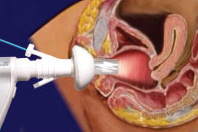
Photo from wikipedia
OBJECTIVES To address healthcare inequities, diversifying the physician workforce is an important step and improved efforts to recruit Underrepresented in Medicine (URiM) students is vital. We aim to examine the… Click to show full abstract
OBJECTIVES To address healthcare inequities, diversifying the physician workforce is an important step and improved efforts to recruit Underrepresented in Medicine (URiM) students is vital. We aim to examine the current state of minority recruitment and provide solutions to increase diversity in urology residency training. METHODS We conducted a retrospective analysis of self-reported race and ethnicity data for active urology trainees using the Data Resource Book by the Accreditation Council of Graduate Medical Education from 2011-2020. We also performed a longitudinal analysis comparing the number of urology applicants to urology trainees from 2016 to 2020 using the Electronic Residency Application Service statistics database. URiMs were designated in alignment with ACGME definitions. Categorical variables were summarized as frequencies and percentages and compared using chi-squared test between race and ethnicity. RESULTS We identified 11,458 active urology trainees for analysis. Of these, 6638 (57.9%) identified as White, 1690 (14.7%) as Asian/Pacific Islander, 442 (3.9%) as Hispanic, 380 (3.3%) as Black, 11 (0.1%) as Native American, 608 (5.3%) as other race/ethnicity and 1689 (14.7%) as unknown race or ethnicity. In 2011, 8.1% of trainees identified as URiM which remains the same at 8.2% in 2020. CONCLUSIONS As we strive to improve patient care and support our URiM colleagues, diversity, equity, and inclusion must be prioritized. Despite increases in students entering medical school and the expansion of urology training spots, the numbers of URiM in urologic training remains stubbornly unchanged. This work highlights an area of residency training that requires critical transformation.
Journal Title: Urology
Year Published: 2021
Link to full text (if available)
Share on Social Media: Sign Up to like & get
recommendations!